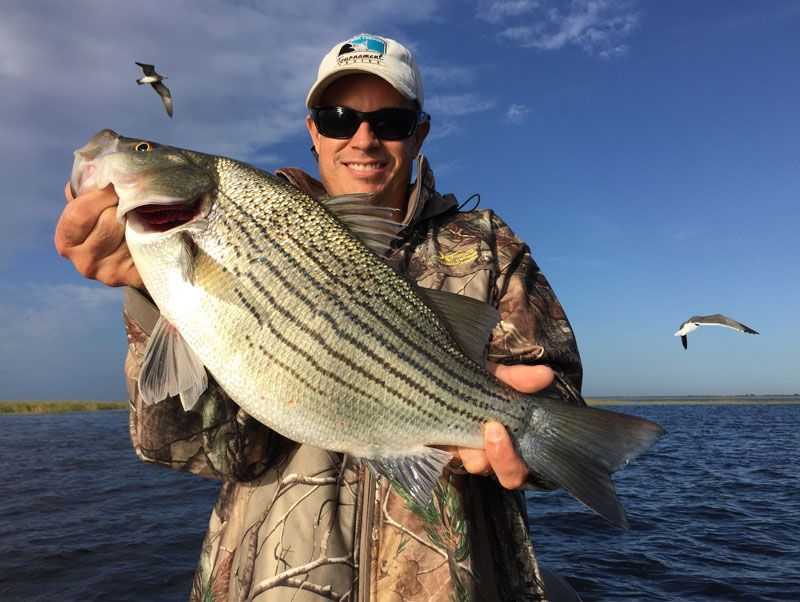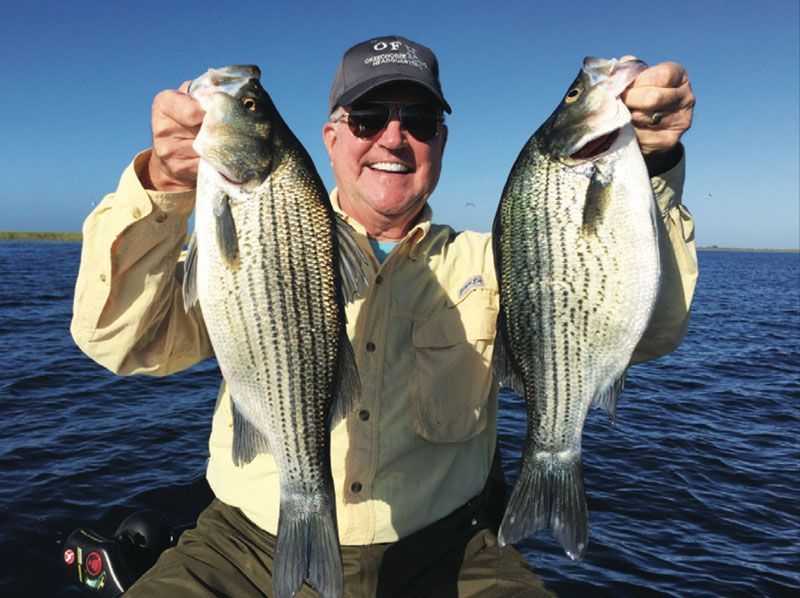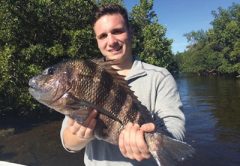Whether you’re an avid fishermen, an occasional fishermen, or a casual bystander, just about everyone knows about Florida’s largemouth bass. Most freshwater fishermen spend a life time trying to catch just one 10-pound bass. What few don’t realize is that there’s another bass in north and central Florida that will give the largemouth bass a run for its money, and that’s the Florida Sunshine bass.
A Sunshine bass is an artificially spawned fish created by crossing the eggs of a female White bass with the sperm of a male Striper. The result is a silvery, striped fish that has the body shape of a White bass and the stripes of a Striper. Similarity by combining the eggs of a Striper with the sperm of a White Bass results in what is called a Palmetto Bass. Both fish are very similar in size and shape. Refer to this month’s front cover for a picture of a Sunshine bass recently caught on Lake Okeechobee by Nathan Shellen.

BEING HYBRIDS, SUNSHINE BASS CANNOT BREED ON THEIR OWN SO THE FWC STOCKING PROGRAM RELEASES ROUGHLY 1 MILLION SUNSHINES ANNUALLY INTO LOCAL RIVERS AND LAKES.
Being hybrids, Sunshine bass cannot breed on their own so the FWC stocking program releases roughly 1 million Sunshines annually into local rivers and lakes. Lake Okeechobee receives approximately 100,000 fingerlings per year. Being voracious eaters, under the right conditions they can grow to 4 to 6 pounds within a 3-year period. The state record for the Sunshine bass is 16.31-lbs caught on Lake Seminole in 1985.
Sunshine bass prefer cooler waters and therefore are much more active during the winter months. Even then they’ll seek out cool feeder streams and deep holes.
Catching Sunshine bass is a matter of locating them. They generally follow schools of bait fish and that means open water in the larger lakes. In rivers they’re attracted to flowing water and drop-offs so areas like flood gates, spill ways, and cool water outflows are prime fishing grounds. Shad are their favorite food source but they’re not picky eaters and fall easily to artificials such as spinner baits, crank baits, and anything that resembles a baitfish.
Once you hook into a Sunshine you’ll be surprised by their fight. Unlike largemouth bass which quickly come to the surface, Sunshines will stay deep and attempt to head to open water. The fight has been compared to that of a redfish with fast, powerful runs with lots of directional changes. If you happen to be fishing with wild shiners, be patient with the hook set, for a Sunshine has a smaller mouth and needs to manage the bait more gingerly than a big bass.
Once you landed your Sunshine you can turn your thoughts to dinner. Florida Sunshines have a light-colored flesh with a delicate flavor and firm large flakes. They adapt well to most recipes and are great broiled or grilled. Bon Appetite.
So the next time you’re out and the largemouth bass action is slow, take a run offshore and look for signs of nervous baitfish, for dinner in the form of a school of Sunshine bass could be there for the taking.







